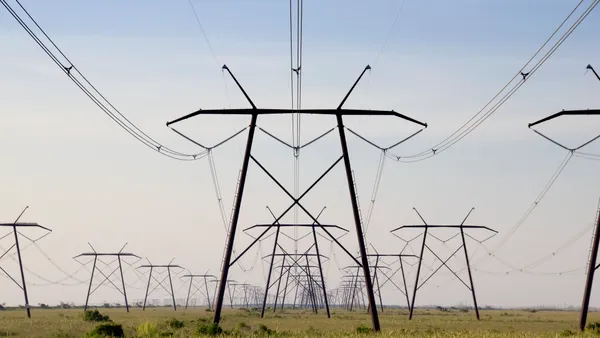Dive Brief:
- National Grid will turn to Utilidata to help reduce electricity demand in Clifton Park, N.Y., by installing the company's Volt/VAR Optimization technology on the local grid.
- The partnership is expected to reduce power demand by 3%, and will not require any action from customers, according to the software company. Utilidata said its system uses real-time information to "optimize the delivery of electric power."
- The demonstration project is part of New York's Reforming the Energy Vision regulatory proceeding, which is focused on reforming utility revenue models to incentivize the deployment of distributed resources and efficiency programs as alternatives to traditional infrastructure investments.
Dive Insight:
In New York, the state's REV proceeding continues to turn up interesting projects.
Reducing system-wide demand by 3% is significant, and Utilidata says it can achieve that without involving the customer.
“The REV demonstration project in Clifton Park is designed to test a variety of innovative solutions to reduce demand and improve the efficiency of the electric distribution system,” National Grid Vice President Carlos Nouel said in a statement.
The voltage optimization project is expected to yield annual savings of almost 6 million kWh and avoid more than 4,216 metric tons of carbon dioxide emissions.
"Working together, we’ll provide distribution system insights that improve reliability and power quality for local residents," said Utilidata Chief Commercial Officer Josh Brumberger.
According to the company, by optimizing distribution delivery voltages Utilidata can help reduce energy usage at customer locations while also improving overall distribution reactive demand.
"Unlike traditional energy efficiency measures, this enables the utility to save energy without customer action and those savings can be passed on to all customers," the company said.
The project is part of the REV proceeding, launched three years ago to push utility business model reform.
Last year, the state's Public Service Commission approved new rules to reform revenue models for utilities. In addition to traditional cost-of-service regulation, utilities can now earn revenue from performance measures tied to efficiency and customer engagement, market-based earnings from their role as distribution system operators, and the deployment of distributed resources instead of traditional grid infrastructure.













